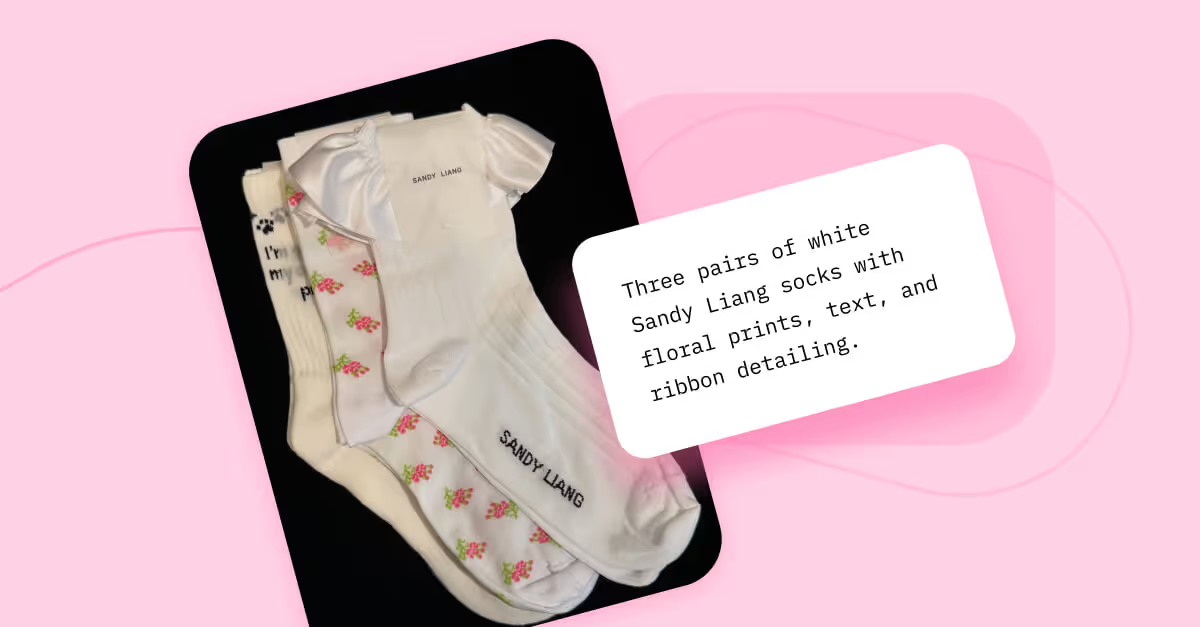10 Inspirational Marketing Campaigns Every Brand Can Learn From
Stuck in a rut? Spark ideas with inspiration from some of the most inspiring marketing campaigns.
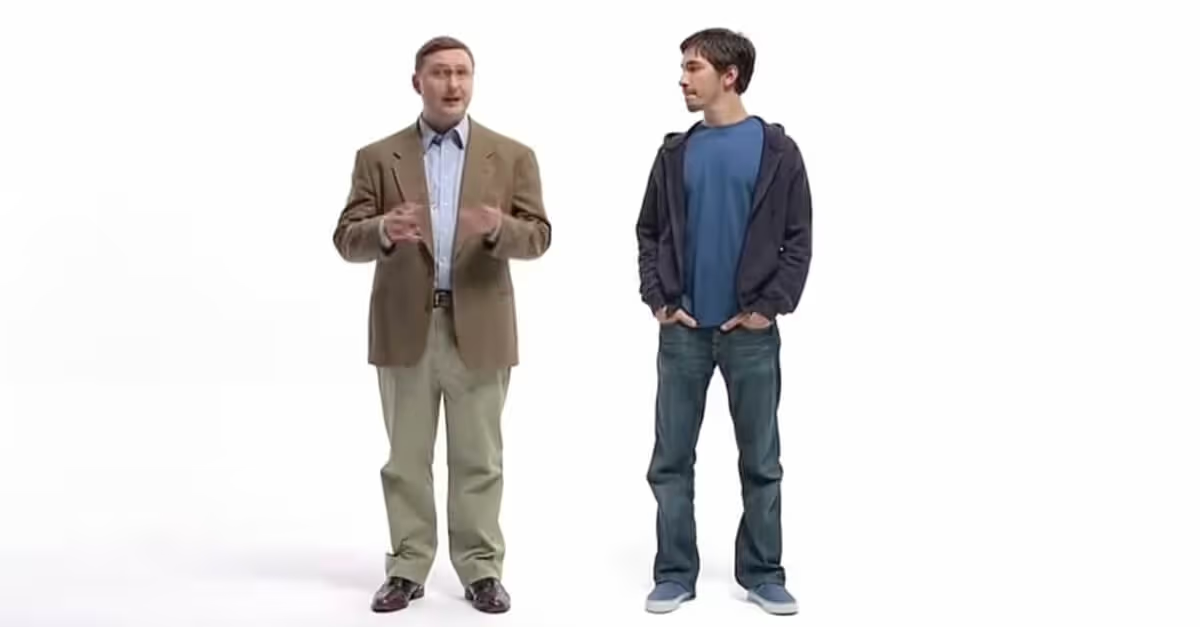
The power of a great, inspirational marketing campaign can’t be underestimated. With roughly 40 million people tuning into the Super Bowl each year for the ads alone, sometimes, a great advertisement is the main event.
Whether you’re looking for inspiration for your next campaign, curious about what drives success for some of the top brands, or simply want to explore which campaigns made the biggest splash, we’re sharing 10 of the most inspirational marketing campaigns and what makes them unique.
TL;DR:
- The most memorable marketing campaigns tap into emotion, humor, or nostalgia to create authentic connections that drive results.
- Consistency and simplicity, like Nike’s “Just Do It” or “Got Milk?” slogans, help campaigns stick in culture for decades.
- Storytelling and cultural relevance can transform ordinary products or brands into global icons.
- You don’t need a massive budget to make an impact. Creativity, authenticity, and understanding your audience matter more.
- The best campaigns reflect brand values clearly and inspire audiences to act, think, or feel differently.
What Makes a Marketing Campaign Successful?
Marketing campaign success looks different for every brand and is largely dependent on your organization's size and overall marketing goals. For example, each year Coca-Cola produces a holiday-themed advertising campaign, not with the main goal of driving sales (although their festive commercials typically do bring in more sales), but of building emotional connection with their audience, bolstering its brand as a pillar of festive traditions, and encouraging consumers to associate their brand with warm holiday feelings.
10 Marketing Campaign Examples
So, what have some of the best brands done right when executing marketing campaigns? We’re looking at the boldest, best campaigns and what makes them stand out.
1. Apple: Get a Mac
Apple’s ‘Get a Mac’ campaign launched in May 2006 and ran through until 2009. It remains an ultra memorable marketing campaign for the tech industry. The campaign was focused on television, with 66 ad spots running throughout its duration. Each commercial starred a laid-back, friendly ‘Mac’, played by Justin Long, alongside a stiff, suit-wearing ‘PC.’ The contrast was simple but powerful: Macs are cool, reliable, and easy to use, while PCs were clunky and outdated.
What set this campaign apart was its personality. Instead of leaning on technical jargon, Apple used humor and relatability to humanize the brand. The ads made computers feel approachable, even fun, which was rare for the category at the time. The minimalist white backdrop and direct dialogue gave the campaign a clean, consistent look that made every spot instantly recognizable.
The results wereas impressive as the creative. Months after launching, Apple sold 1.3 million Mac computers by June 2006, and reported a 39% increase in sales that year. Ultimately, this campaign helps Apple turn Macs from niche creative tools into a must-have for the mainstream. The takeaway? Clear positioning and clever storytelling can reshape an entire category.
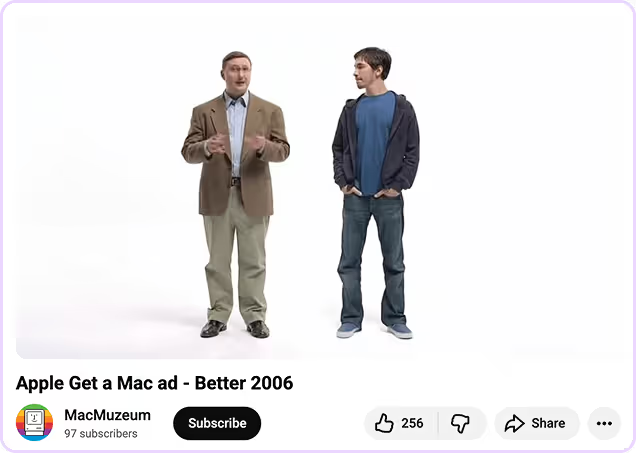
2. Snickers: Have a Snickers
Ever looked at your ‘hangry’ friend and thought they could use a Snickers? With the impact of this campaign, it’s highly likely you said ‘yes’. Snickers launched this campaign during the 2010 Super Bowl, using the ever-charismatic Betty White to cement its place in advertising history. Their point? Hunger makes people act out of character, and Snickers has the fix.
They replicated this formula across various ad spots, keeping the concept fresh while staying consistent. Despite the term ‘hangry’ being first noted in 1956, the Snickers campaign undoubtedly brought it into the mainstream.
Snickers saw global sales grow 16%, with market share growing in 56 different global markets. Two years from launch, the campaign also contributed to a $376 million increase in sales. Snickers is a perfect example of how one clear, clever idea rooted in human behavior can refresh a legacy brand (without changing the product) and drive massive sales growth.
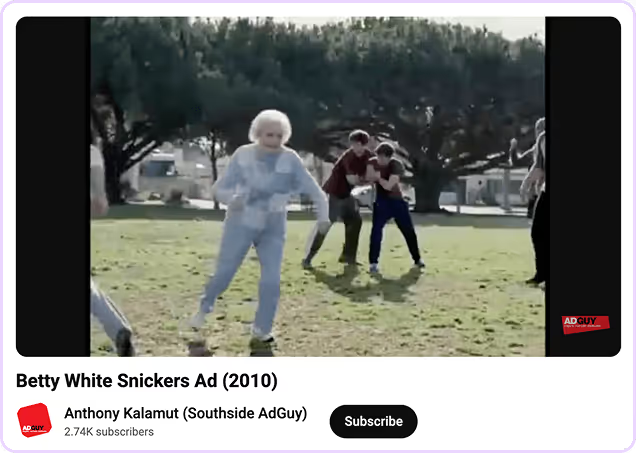
3. Warner Bros: Barbie
The Barbie movie was a complete cultural event rooted in fun and empowerment. This campaign marked an interesting challenge for the brand, rooted more in nostalgia and aiming to reach their former target demographic (Millennials and Gen Z who grew up with Barbie), rather than solely focusing on Mattel’s existing target market, Gen Alpha.
The campaign from Warner Bros. and Mattel leveraged collaborations with brands loved by their adult target audience, with more than 165 brand partnerships, from Barbie-pink luggage by BÉIS, to a line of clothing with Gap. The marketing combined entertainment, lifestyle, and digital culture, turning everyday moments and even other brands into extensions of Barbie’s identity. This resulted in constant online buzz that heavily contributed to the viral “Barbenheimer” moment, which captured global attention.
The results spoke for themselves. With an estimated $150 million marketing budget, Barbie grossed over $1 billion worldwide in its first month. Its success came down to a few key factors: emotional storytelling, nostalgia, creative collaboration, and the power of social media marketing. It shows how brands that invest in storytelling and community engagement can create a cultural phenomenon.
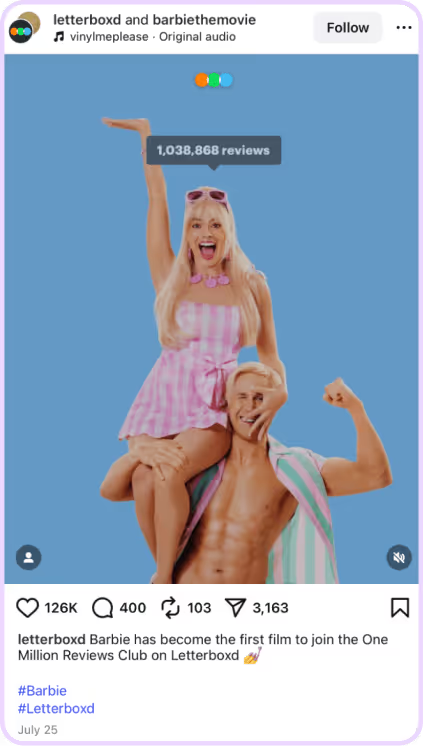
4. Dove: Real Beauty
Dove’s ‘Campaign for Real Beauty’ launched in 2004, and largely changed the conversation around beauty marketing. The brand moved away from glossy, photoshopped perfection and spotlighted real women with diverse bodies, faces, and stories. This approach repositioned Dove from a simple soap company into a global advocate for confidence and self-esteem.
The campaign stood out because it tapped into an undeniable truth: many women struggle with self-esteem, and even more don’t feel represented in traditional advertising. Dove challenged this narrative, eventually developing ‘Real Beauty Sketches’ in 2013, challenging women to sketch how they perceived themselves and showing how we’re often our worst critics.
This emotionally raw storytelling proved successful. Six months after launching, Dove’s sales increased 600% in the United States and 700% in Europe, with global sales passing $1 billion in 2004. They sustained success, with their 2013 ‘Real Beauty Sketches’ earning 50 million views in just 12 days, and sales growing to $4 billion in 2013.

5. Nike: Just Do It
Nike’s ‘Just Do It’ campaign is a slogan that endures today. Launched in 1988 by advertising firm Wieden+Kennedy, this simple slogan and associated campaign turned a shoe company into a symbol of ambition and drive. The campaign encouraged people to take action, no matter their background or ability, and inspired athletes to view personal growth and motivation as seriously as beating the competition.
The strength of the campaign lies in its simplicity. The message was clear, adaptable, and timeless, allowing Nike to use it across every product and region. Over time, Nike built on this foundation by incorporating social issues, athletes, and cultural moments, keeping the message as relevant today as it was decades ago.
In the first ten years of its ‘Just Do It’ campaign, Nike increased its sales from $877 million to $9.2 billion, also boosting its share in the domestic sport-shoe market by 25%, after spending just $300 million in advertising. Have a simple, but punchy marketing idea? Just do it.
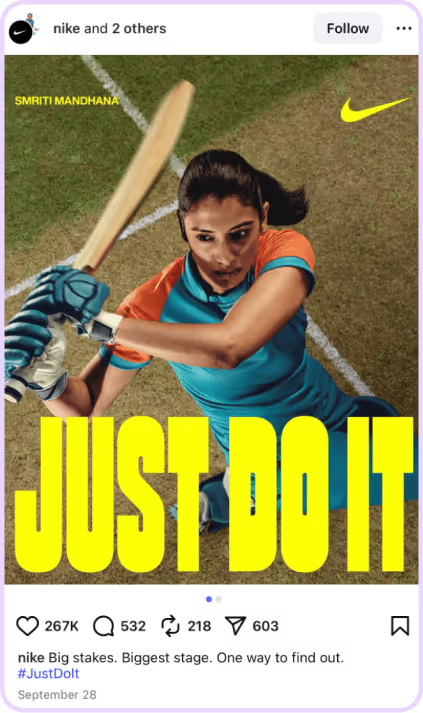
6. California Milk Processor Board: Got Milk?
While brand name recognition for the ‘California Milk Processor Board’ might not have been the most successful part of this campaign, if you were alive and sentient in the late-90s to early 2000s you very likely remember the ‘Got Milk?’ campaign. Celebrities and athletes were plastered in magazines and advertisements everywhere, sporting a milk mustache, with copy about how milk fuels them, and of course, the classic ‘Got Milk?’ headline.
The campaign excelled in its simplicity and cultural relevance. The two-word tagline was impossible to forget. From magazine covers to TV commercials, the milk mustache became a pop culture symbol, showing that something as ordinary as milk could be marketed with personality.
By 1995, awareness of the ‘Got Milk?’ campaign reached 90% in California, with household penetration for milk reaching 70%. The campaign also proved a hit in the marketing world, with Michael Bay’s (yes, that Michael Bay) ‘Got Milk?’ commercial winning the Grand Prix Clio Award, a prestigious marketing award, and a Silver Lion at Cannes.
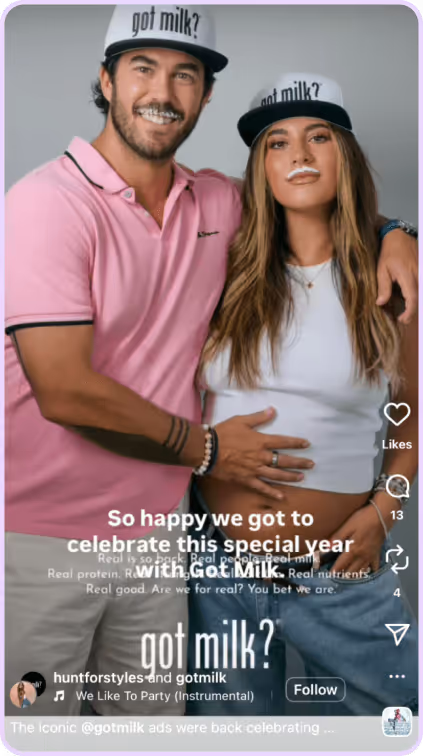
7. Old Spice: Your Man
Old Spice’s 2010 ‘The Man Your Man Could Smell Like’ campaign completely reinvented the brand. The 30-second ad spot starring Isaiah Mustafa featured fast-paced humor and broke the fourth wall, with Isaiah speaking directly to the consumer. In this case, the women who typically purchase household hygiene products, not necessarily men themselves.
Old Spice’s creative leap flipped the brand’s image. Once seen as an outdated brand for older men, it became funny, self-aware, and culturally relevant. The ad’s over-the-top charm and viral one-liners made it perfect social media fodder, well before ‘going viral’ was a big request from marketing managers. By speaking directly to women while bringing men in on the joke, Old Spice managed to diversify its audience and refresh its identity.
The results were undeniable. The campaign received 5.9 million YouTube views in 24 hours (notable for the time, with this outperforming Obama’s viral victory address on the platform), had eight videos ranking among the most popular 11 YouTube videos, and saw website traffic increase 300%. The performance on the brand’s other social accounts was also impressive, with Twitter followers increasing by 2700% and Facebook engagement growing by 800%.
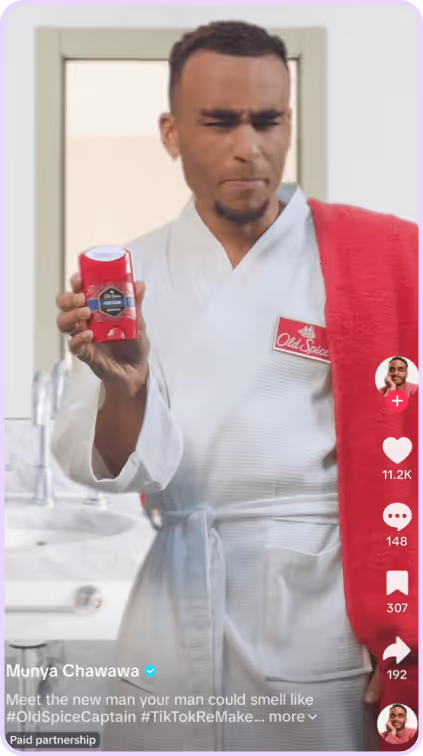
8. Coca-Cola: Christmas Campaign
As previously mentioned, Coca-Cola’s Christmas campaigns have become a holiday tradition in their own right. They originated as oil paintings by Harrod Sundblom and launched as magazine print advertisements in 1931, with Sundblom crafting these advertisements until 1964. These original paintings are extremely coveted, with originals on display in the Louvre in Paris, the Museum of Science and Industry in Chicago, and the Royal Ontario Museum in Toronto.
What makes these campaigns stand out is their emotional consistency. Coca-Cola doesn’t just advertise during the holidays; it helps define them. The brand’s holiday imagery often incorporates polar bears, sparkling lights, its iconic red truck, and, of course, Santa Claus drinking a Coca-Cola. The brand leans into tradition, making its ads a highly anticipated event every holiday season.
This campaign has translated to long-term success for the brand (despite a brief hiccup in 2024, with some controversy stirring over the brand’s use of AI). Coca-Cola reported a boost in Winter sales and success in cementing the brand as a hallmark of the holiday season, with 44% of people saying these ads spark the start of the Christmas season.
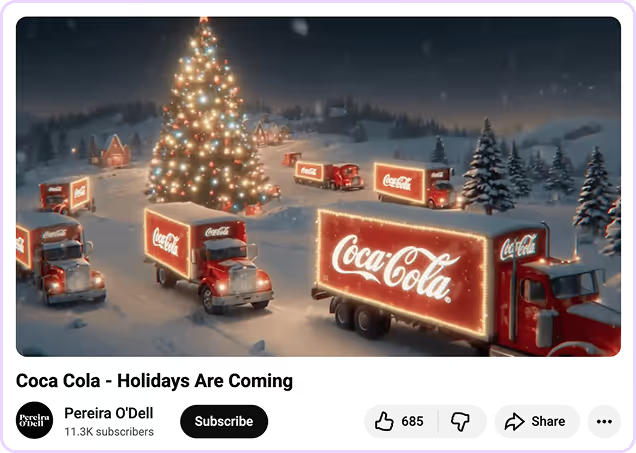
9. Texas: Don’t Mess With Texas
Did you think ‘Don’t Mess With Texas’ was the state’s official slogan? Yeah, me neither. But if you did, this proves how catchy and enduring the anti-littering campaign and its ‘Don’t Mess with Texas’ slogan are. Launched in 1986 by the Texas Department of Transportation, the campaign was initially aimed at reducing littering and incorporated celebrity endorsements in both billboards and TV advertisements.
The campaign effectively captured Texas's ‘essence’. The slogan appeared on T-shirts and bumper stickers, turning a public service announcement into a badge of identity. Rather than leading with guilt or shame, the Department of Transportation leaned into local pride with a message that grew to represent how an entire state of people feels about their home.
But how did this slogan actually impact Texas littering? Litter on Texas highways dropped 29% in the campaign’s first year, ultimately falling 72% by 1990. The Department of Transportation also trademarked the slogan, earning royalties from its use. The slogan also beat out another prestigious slogan on this list (‘Got Milk?’) for the 2006 Advertising Walk of Fame’s favorite slogan contest.
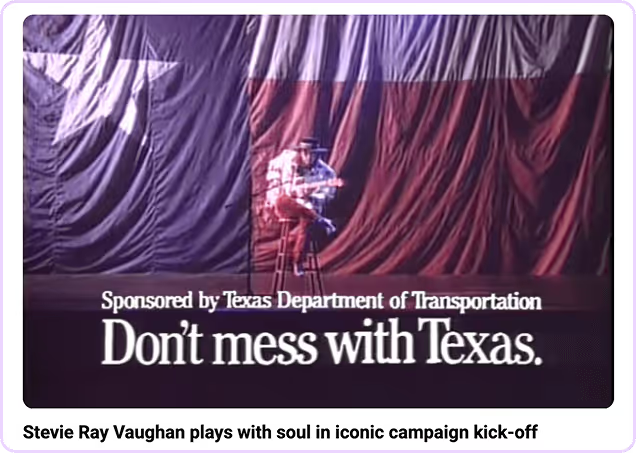
10. Dos Equis: Most Interesting Man in the world
Dos Equis’ ‘The Most Interesting Man in the World’ campaign, launched in 2006, also launching a plethora of popular memes from its “I don’t always drink beer, but when I do, I prefer Dos Equis.” tagline. The character embodied confidence and sophistication, positioning the brand as something to aspire to rather than just another beer on the shelf. Beyond feeling aspirational, it leaned into humor, reaching audiences who appreciate refinement and a good joke.
The campaign did a great job of selling an attitude, not just a product. Beyond its ‘I don’t always drink…’ slogan, the brand coined spokesperson, Jonathan Goldsmith, ‘the most interesting man in the world’, bringing a sense of mystery and fun to the brand. He quickly became a meme, ‘going viral’ before the term fully entered the social media lexicon.
Beyond launching a thousand memes, the campaign also boosted Dos Equis' sales. Since launching the campaign, Dos Equis tripled its business, and the number of cases shipped by the brand increased nearly 35% from 2007 to 2015. The campaign proved character-driven marketing was alive and well.
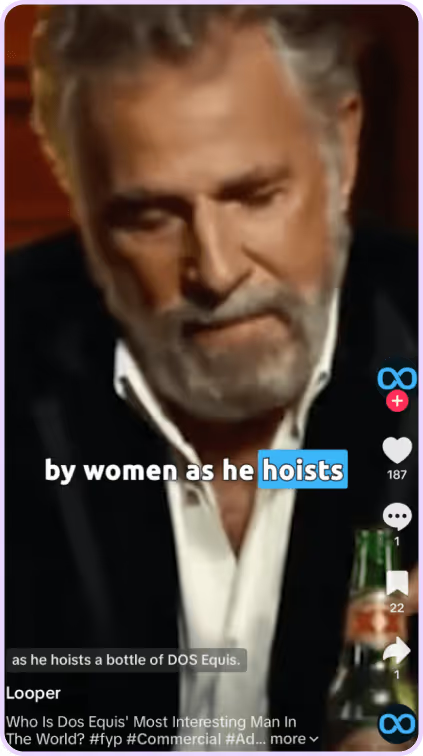
Marketing Campaign Examples FAQs
What mistakes or pitfalls should I avoid in my marketing campaign planning?
There’s no crystal ball to get a glimpse into every possible thing that can go wrong during campaign planning, however, brands can avoid a few things to maximize their chances of a campaign running smoothly. Here are some pitfalls to avoid when planning your marketing campaign:
- Not understanding your audience: Which influencers will your audience cheer for, and which are unlikely to land? Understanding the psychographic factors of your demographic will go far in working with the best creators for your brand.
- Lack of clearly defined values: Does your audience know what you stand for? Having clearly developed brand values helps your audience know what to expect from you, and eliminates surprises that could result in backlash.
- Setting unrealistic goals: Without clear benchmarks for success, it’s difficult to measure progress or sustain momentum.
What makes a marketing campaign inspirational?
The most inspirational marketing campaigns share one or more of these key factors:
- Storytelling: They evoke positive emotions through storytelling.
- Quotability: Is the content instantly quotable? Campaigns with ‘meme’ potential can pick up steam in popular culture.
- Authenticity: Campaigns should feel genuine and align with the brand’s values, making the message believable and emotionally resonant.
How can small brands create inspirational campaigns with limited budgets?
Small brands can create inspirational campaigns by focusing on creativity, authenticity, and connection instead of scale. In 2025, brands aren’t beholden to large marketing budgets to make an impact. Instead, they can make a splash on social media, earning organic traction that can translate to more revenue, more engagement, and more brand awareness. Consider the beverage container company, Stanley’s, growth, which is largely thanks to social media and its commitment to customer service, which saw revenue increase from $70 million to $750 million in 2023. Despite being a larger business, their approach is something brands of all sizes can learn from.




